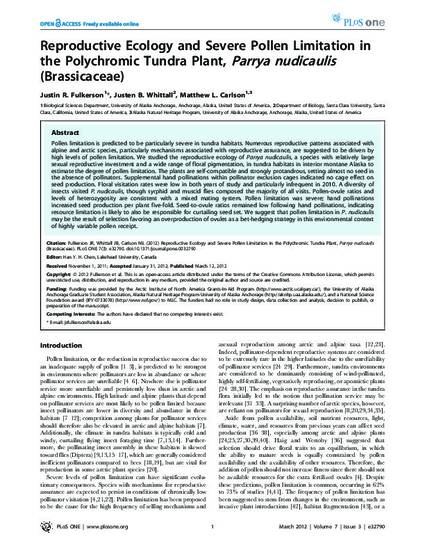
Pollen limitation is predicted to be particularly severe in tundra habitats. Numerous reproductive patterns associated with alpine and arctic species, particularly mechanisms associated with reproductive assurance, are suggested to be driven by high levels of pollen limitation. We studied the reproductive ecology of Parrya nudicaulis, a species with relatively large sexual reproductive investment and a wide range of floral pigmentation, in tundra habitats in interior montane Alaska to estimate the degree of pollen limitation. The plants are self-compatible and strongly protandrous, setting almost no seed in the absence of pollinators. Supplemental hand pollinations within pollinator exclusion cages indicated no cage effect on seed production. Floral visitation rates were low in both years of study and particularly infrequent in 2010. A diversity of insects visited P. nudicaulis, though syrphid and muscid flies composed the majority of all visits. Pollen-ovule ratios and levels of heterozygosity are consistent with a mixed mating system. Pollen limitation was severe; hand pollinations increased seed production per plant five-fold. Seed-to-ovule ratios remained low following hand pollinations, indicating resource limitation is likely to also be responsible for curtailing seed set. We suggest that pollen limitation in P. nudicaulis may be the result of selection favoring an overproduction of ovules as a bet-hedging strategy in this environmental context of highly variable pollen receipt.
